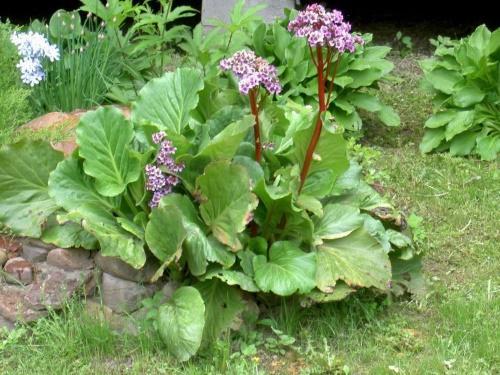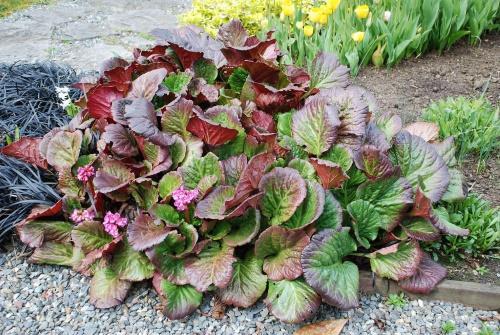Healing handsome badan thick-leaved
 Many garden plants not only have a beautiful decorative look, but are also able to act as a home doctor due to their medicinal properties. One of these crops is thick-leaved badan - a pretty bush with large leaves and gentle long flowering. He came to us from Altai and firmly settled in dense thickets of coniferous and deciduous forests, as well as among the rocks. Outwardly, it is not particularly impressive and powerful, badan actually has a strong and hardy character. The shade and cold winter are not terrible for him, which makes the flower a welcome guest in the flower beds of flower growers.
Many garden plants not only have a beautiful decorative look, but are also able to act as a home doctor due to their medicinal properties. One of these crops is thick-leaved badan - a pretty bush with large leaves and gentle long flowering. He came to us from Altai and firmly settled in dense thickets of coniferous and deciduous forests, as well as among the rocks. Outwardly, it is not particularly impressive and powerful, badan actually has a strong and hardy character. The shade and cold winter are not terrible for him, which makes the flower a welcome guest in the flower beds of flower growers.
The plant is also known under the name "saxifrage" because of its ability to live among rocky crevices. On the other hand, they say that the flower got this name for its ability to remove stones from the kidneys.
What is a plant?
Badan thick-leaved no wonder they call it that. The perennial compact bush, the total height of which does not exceed 50 cm, has very large leaves. They are painted in a rich green color and cast a glossy shine, the leaf plate is rather fleshy and dense, decorated with rounded teeth along the edge. With the arrival of autumn, the leaves turn red. The deciduous rosette persists for three years, after which new leaves are formed, and the old ones die off.
The popular name for badan is "elephant ears" (for its wide fleshy leaves).
The root system of the plant is fleshy and branched, with a large vertical root. The roots spread to the sides far beyond the flower bed, reaching a length of several meters. They are brown on top and pinkish on the inside, and with prolonged contact with air, the pulp also turns black.
Badan blooms at the end of spring, even before the young leaves bloom on the bushes. A thick reddish peduncle shoots out from the center of the rosette, at the top of which there are several dozen bell-shaped inflorescences. Their color can be different, but mostly they are different shades of pink.
Features of home growing
Badan thick-leaved feels good among garden plants, moreover, it does not require much attention. It is best to propagate the bush by dividing the rhizome at the end of spring, but if this is not possible, you can buy seeds at the store and grow seedlings.
You can plant a plant both in a sunny place and in partial shade: it easily tolerates a lack of lighting and continues to actively grow new leaves and roots, however, flowering in this case will not be so bright.
Badan does not like to be disturbed, therefore, old bushes should be transplanted no more than once every 5 years.
Saxifrage caring is simple and includes:
- abundant watering;
- in spring - feeding with a mineral fertilizer complex;
- autumn - introduction superphosphate;
- pruning leaves in the spring (not before winter).